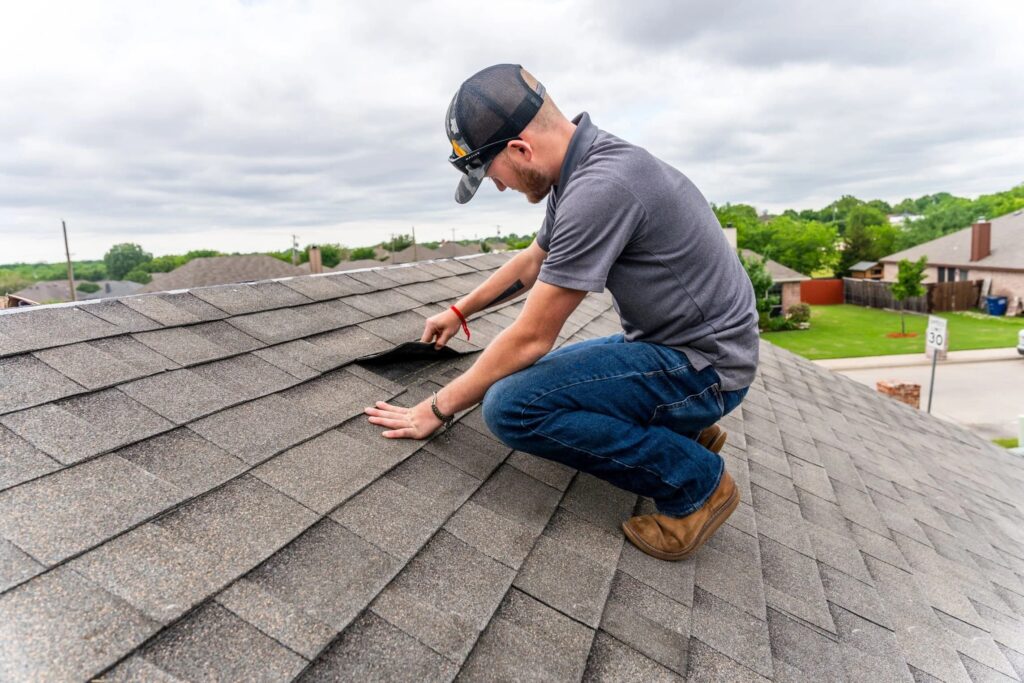• Find out how a new roof can boost your home’s energy efficiency
• Learn which roofing materials and colors help lower energy bills
• Discover how insulation, ventilation, and design affect heat loss and gain
Can a New Roof Improve Your Home’s Energy Efficiency?
When people think about making their homes more energy efficient, they often focus on windows or insulation. But your roof plays just as big a role. In fact, installing an energy efficient roof can lower energy bills, improve comfort, and extend the life of your HVAC system.
If your current roof is old, damaged, or made from outdated materials, upgrading to an energy efficient roofing system could be one of the smartest investments you make for both your comfort and your wallet.
Here’s how a new roof can save energy and what to consider before replacing it.
1. Reflective Roofing Materials Help Reduce Heat Gain
What it means:
Some roofing materials are designed to reflect sunlight instead of absorbing it. This keeps your attic and living spaces cooler in the summer.
Best energy efficient roof options:
Metal roofing: Long-lasting and highly reflective
Cool roof shingles: Designed with reflective granules to deflect heat
Clay or concrete tiles: Naturally heat resistant
Ohio homeowners take note: Even in cooler regions like Northwest Ohio, a reflective energy efficient roof helps reduce the workload on your furnace and air conditioner year-round.
2. Improved Insulation Minimizes Heat Loss in Winter
How it helps:
A new energy efficient roof gives you the chance to upgrade insulation and seal air leaks. This prevents heat loss in winter and keeps cool air in during summer.
Added benefit:
Reduced drafts, fewer temperature swings, and lower monthly bills.
3. Proper Ventilation = Better Temperature Control
Why ventilation matters:
A well-ventilated, energy efficient roof lets warm air escape while pulling in fresh air. This reduces summer overheating and prevents winter ice dams.
What to look for:
Ridge or soffit vents
Balanced intake and exhaust
Contractors familiar with energy goals and local codes
Bonus: Good ventilation prevents mold and extends roof lifespan.
4. Lighter Roof Colors Reflect More Sunlight
Does color really matter?
Yes! Lighter-colored roofing reflects more sun, reducing attic heat gain.
Best for:
Homes with lots of sun exposure
Improving cooling efficiency
Lowering summer energy bills
💡 Tip: Choose Energy Star–rated roofing products (learn more at Energy Star Roofing Guidelines) which may qualify for tax incentives.
5. Old or Damaged Roofs Waste Energy
How old is your roof?
If it’s 15–25 years old or damaged, it’s probably not energy efficient.
Signs of energy waste:
Cold spots or drafts indoors
Ice dams in winter
High heating/cooling bills
Poor attic ventilation
✅ Conclusion: A New Roof = A Smart Energy Upgrade
Replacing your roof isn’t just about curb appeal — it’s a chance to install an energy efficient roof that lowers bills and boosts comfort.
Whether you choose reflective materials, add insulation, or improve ventilation, the right roofing system offers long-term savings and year-round comfort.
If you’re considering a new roof in Northwest Ohio, talk to a licensed contractor who specializes in energy efficient roofing systems to get the best results for your home.

4. Read Reviews and Check Ratings
Why it matters:
Online reviews offer real-world insight into how a contractor communicates, handles problems, and honors timelines and budgets.
What to look for:
- 4+ star ratings on Google, Angi, Yelp, or BBB
- Consistent positive feedback about professionalism, cleanliness, and communication
- How the contractor responds to negative reviews
Red flag: Lots of recent complaints or no online presence at all.
5. Get a Detailed, Written Estimate Not Just a Price
Why it matters:
An honest roofing contractor should provide a clear, written estimate with everything included, not just a number on a sticky note.
What to look for:
- Scope of work, materials, labor, timeline, cleanup plan
- Any additional costs (like plywood replacement or permit fees)
- Payment schedule and final cost
Never sign a vague estimate. Ask questions until everything is clear.
6. Ask About Their Crew Not Just the Salesperson
Why it matters:
Many roofing companies hire subcontractors. That’s not always a bad thing but you should know who will be on your roof and if they’re qualified.
What to ask:
- Will your employees or subcontractors do the work?
- Are they insured and experienced?
- Who supervises the crew on-site?
7. Trust Your Gut (and Don’t Be Rushed)
Why it matters:
A good contractor won’t pressure you into signing right away. If someone uses scare tactics or offers a “today-only” discount, walk away.
What to do:
- Take your time comparing quotes
- Go with the contractor who is honest, transparent, and respectful
- Trust your instincts if something feels off, it probably is
Final Thoughts: Protect Your Home with the Right Roofing Partner
Choosing the right roofing contractor in Northwest Ohio doesn’t have to be overwhelming. By focusing on local experience, proper credentials, clear communication, and good reviews, you can avoid costly mistakes and make a smart investment in your home.
Whether you’re dealing with storm damage or planning a full roof replacement, start with a free consultation and estimate from a trusted, licensed professional near you.
